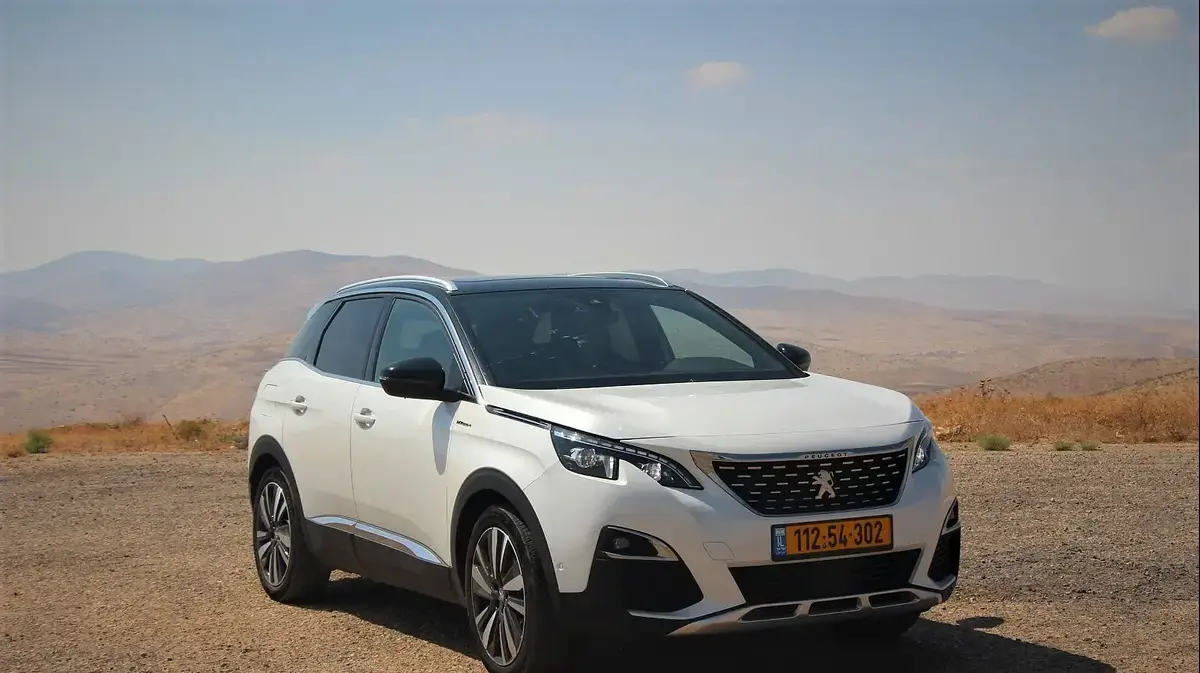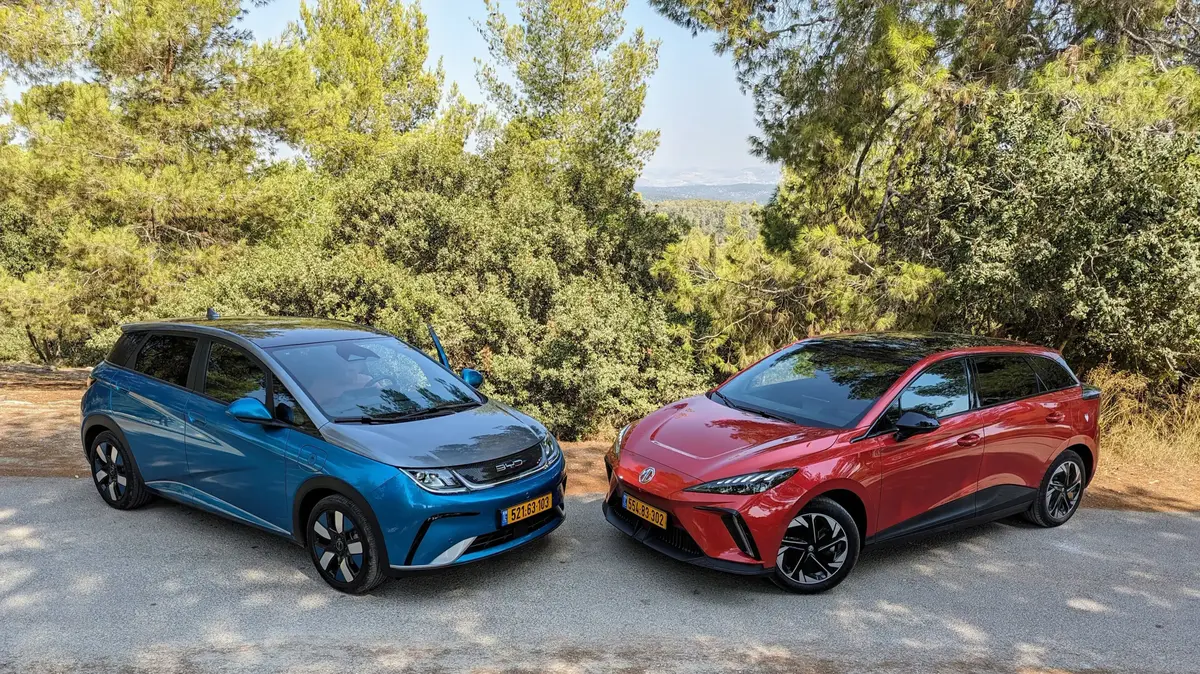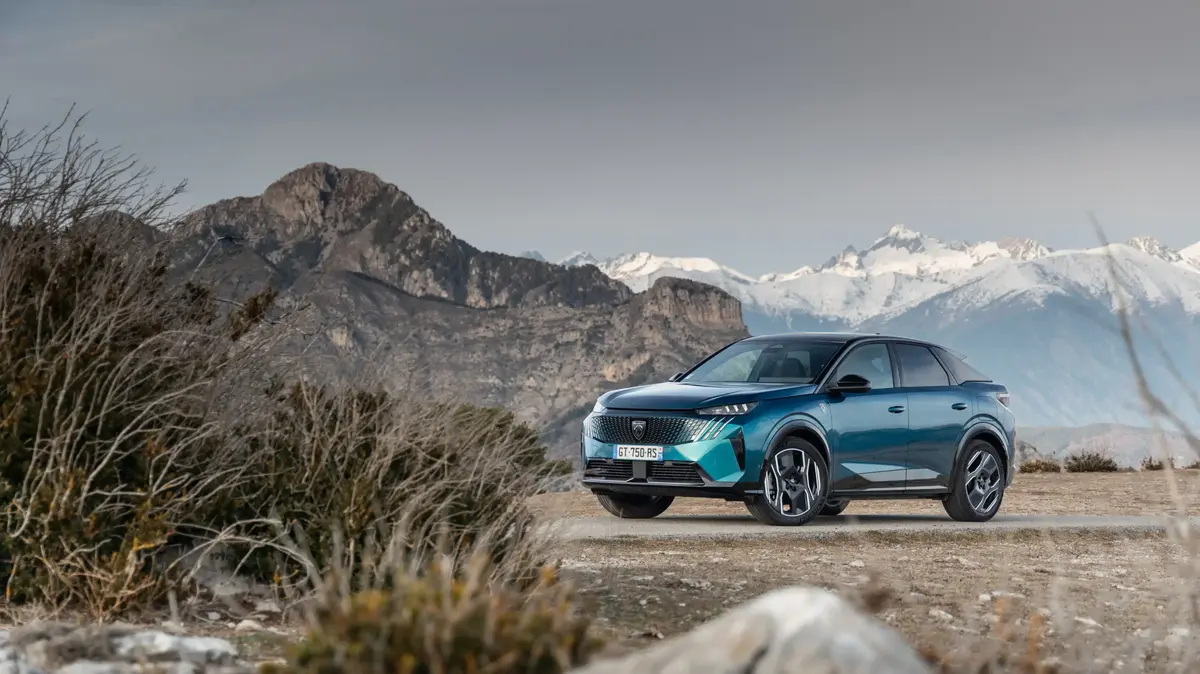vehicle
Vehicle tests
Road test: Peugeot 3008PHEV with 300 hp
The Peugeot 3008PHEV offers the ability to ride on electricity only for a rally range of 50 km. But do 300 hp, dual propulsion, and ample instrumentation justify the price?
Tags
Peugeot
Peugeot 3008
Plug in
Hybrid
Dual propulsion
Crossover
David Lubinski
Joel Schwartz
Wednesday, 18 August 2021, 09:43 Updated: 10:00
Share on Facebook
Share on WhatsApp
Share on general
Share on general
Share on Twitter
Share on Email
0 comments
Apparently of all Peugeot models, the 3008 deserves all the credit for changing Peugeot's brand perception in Israel, as has also happened in most of the countries in the world where the model is marketed.
Although not perfect, over the years he has won (and not only with us), almost every comparative test thanks to his abilities, quality and value for money.
This is true for both petrol and diesel engines, but is this also the case with the PHEV versions?
Yes and no.
More on Walla!
So who is Israel's chosen jeep?
To the full article
A unique cabin, not everyone will get along with its strangeness (Photo: Joel Schwartz)
What do you get?
To the variety of 3008 versions that have been marketed in Israel since the end of 2016, the last to join are two additional versions, which march the model and brand towards the electric future.
These were plug-in hybrid (PHEV) versions, which combined a 1.6-liter turbo-petrol engine with an engine or electric motors.
Their main advantage is the ability to travel on electricity only for a limited range.
The first version has the addition of one electric motor (110 hp) which leads to a combined power of 225 hp and front-wheel drive.
The second version has two electric motors (110 and 113 hp), a combined power of 300 hp and dual propulsion.
Both have a battery with a capacity of 13.2 kilowatts / hour and a similar driving range on electricity only: 61 km in the 225 hp version, and 63 km in the 300 hp version.
In this version, the 3008 arrives tiredly equipped (Photo: Yoel Schwartz)
There are a few small differences between the PHEV versions and the other internal combustion versions, such as the gearbox in the rechargeable versions connected to the engine via a clutch instead of a torque converter, a multi-link rear suspension instead of a simpler voltage beam, a slightly reduced fuel tank and a still large but not As before (395 liters in the PHEV versions compared to 520 liters in the internal combustion versions).
Beyond that there are no further changes, and what we get is the 3008 that is so familiar to us from a shared history with many tests and comparisons plus hybrid propulsion and the ability to ride on electricity.
More on Walla!
First test: Peugeot 3008 PHEV
To the full article
This means a familiar silhouette that still looks good, and will even look better soon when the PHEV also arrives after a facelift with an even brighter and more prominent 3D facade (the facelift for the petrol and diesel versions is already here).
A cabin that still looks very special and even if not all of its components are as high quality and impressive as they were 5 years ago, it remains one of the most interesting cabins to stay in the category.
There are no changes in the human engineering sector that are not always intuitive, especially when it comes to operating the multimedia system, nor is there anything new about the front and rear space, which remains respectable even if not huge.
Even the engine and gearbox are the same.
The same 1.6-liter turbo-petrol engine and the same 8-speed automatic transmission.
Good space in the back, here too leather upholstery, air conditioning and light (Photo: Yoel Schwartz)
Performance, power, and everything in between
So where is the difference? In addition to the power that comes from the electric motors, and in the ability to travel on electricity only, which completely changes the fuel expenses. We have tested the 225 hp version before, this time we took the 300 hp version and its power is felt from the first moment. Gentle pressing releases the car from the place in a calm and pleasant way, both when the 3008 starts on electricity and also when it starts on petrol (when the electricity runs out). A more determined click sometimes creates a slight delay, mainly so as not to undermine the grip of the tires and cause a spin, but from there this 3008 just flies. 5.9 very nimble seconds are required to cross the 100 km / h threshold, and acceleration continues well beyond. The operation of the power unit is very pleasant, linear and powerful, and even when the batteries run out, the 200 horsepower of the petrol engine is enough to move this crossover convincingly even on long ascents. The transition from gasoline to electricity and vice versa is also not noticeable and only the color of the digits in the speedometer reveals the change: blue when driving on electricity, white when switching to gasoline.
The silhouette is still very beautiful even though almost five years have passed since its presentation (Photo: Yoel Schwartz)
Peugeot reports an electric range of 63 km. In practice I was able to extract only 49 km before the petrol engine woke up, the same range as the 225 version.
Additional charging (6 hours of household outlet or two hours from a 32 amp charging station) and exit this time in hybrid mode, allowed a combined 99 km ride on petrol and electricity, before the last electrons disappeared from the batteries. Throughout the test days the average fuel consumption was 12 km Per liter.
Not something for an average crossover, but great for a crossover with 300 hp and a decent weight gain.
More on Walla!
Comparative test: four small head-to-head crossovers
To the full article
And the extra weight is definitely "respectable".
In the 300 hp version, the batteries add another 411 kg to the car's weight, which is a lot in every aspect.
This is why the fuel consumption is not convincing when the power runs out, the reason for the road behavior is less sharp than we are used to getting from the 3008 (although it is still better than the competition), and the reason the ride comfort is a little stiffer.
To cope with the excess weight the front suspension was recalibrated and the rear was replaced with a multi-connector instead of a simpler tension beam.
At slow speeds small disturbances are less filtered, and at long-distance speeds lateral disturbances such as asphalt repairs or a wavy road are exposed.
This is not bad in itself, but less good than what the powerless 3008 versions offer.
GTI accelerations in crossover?
(Photo: Joel Schwartz)
Worth it or not?
The price of the 3008 PHEV versions is expensive and stands at NIS 255,000 for the 300 hp version (NIS 218,000 for the 225 hp version).
This is a huge gap of 62,000 shekels more than the most expensive and elegant version of the gasoline.
So it's true that the 300 hp version is offered in a GT finish level that adds a few more trifles like better seats that are nice looking, also embracing, also offer a massage option, and also wrapped in Alcantara combined upholstery, and there are also slightly different exterior cosmetics. But also when you take into account The extra armature, the extended herd of horses, and the electric capacity, it's just not worth the extra money. The "regular" 3008 is good enough, well-equipped and economical in itself. Must have it, the Peugeot 3008 offers a great package, but at this price, and good as it may be, it's just not justified.
The new front will soon arrive with the 3D design for the grill (Photo: Yoel Schwartz)
Not only is the price gap too high, there are more magical alternatives on the market.
Toyota Rav 4 PHEV is equally expensive, but at a lower price, a customer who wants a crossover and also drives electricity has the same importer the MG HSE which costs 162,000 shekels, there is also the Citroen C5 Aircross and Opel Grandland, the twin brothers of the Peugeot 3008, which are also offered in versions PHEV are similar and cheap for a few tens of shekels.
And if the customer has deep enough pockets, then there is the DS7 Crossback which costs more, but steps into the worlds of luxury.
More on Walla!
Road test: Toyota Rav 4 plug-in
To the full article
On the technical side: Peugeot 3008PHEV, 300 hp version
Engine, propulsion:
petrol, turbo, 4-cylinder, hybrid, dual
gearbox:
automatic, 8 gears
Volume:
1,598 cc
Combined power (hp):
300
combined torque (kg):
53
batteries (cot) Q):
13.2
Dimensions:
Length (cm):
444.7
Width (cm):
184.1
Height (cm):
162.3
Wheelbase (cm):
267.5
Trunk (liters):
395
Performance:
Acceleration 0 -100:
5.9 seconds
Maximum speed:
240 km / h
Fuel consumption (test):
12 km per liter
Electric range (test):
49 km
Competitors:
Toyota RAV4 PHEV
Price:
255 thousand shekels
Share on Facebook
Share on WhatsApp
Share on general
Share on general
Share on Twitter
Share on Email
0 comments






